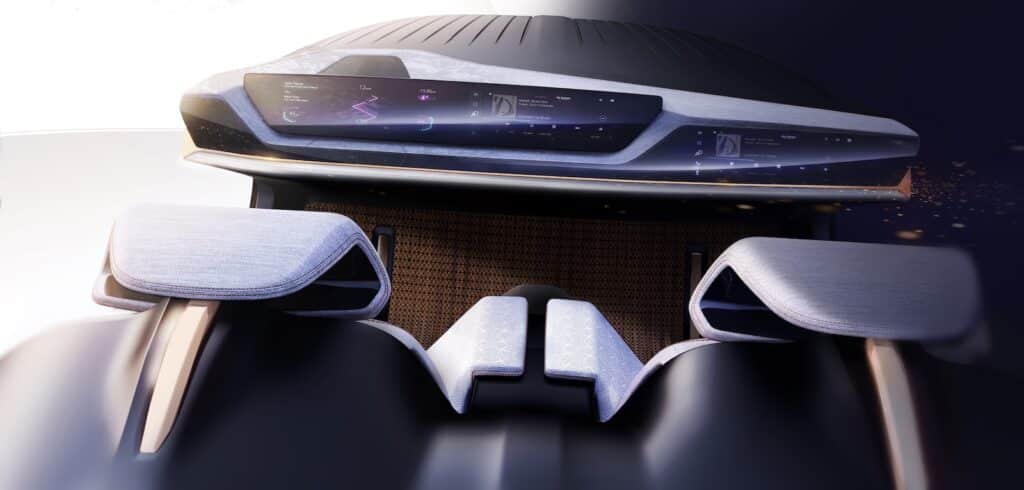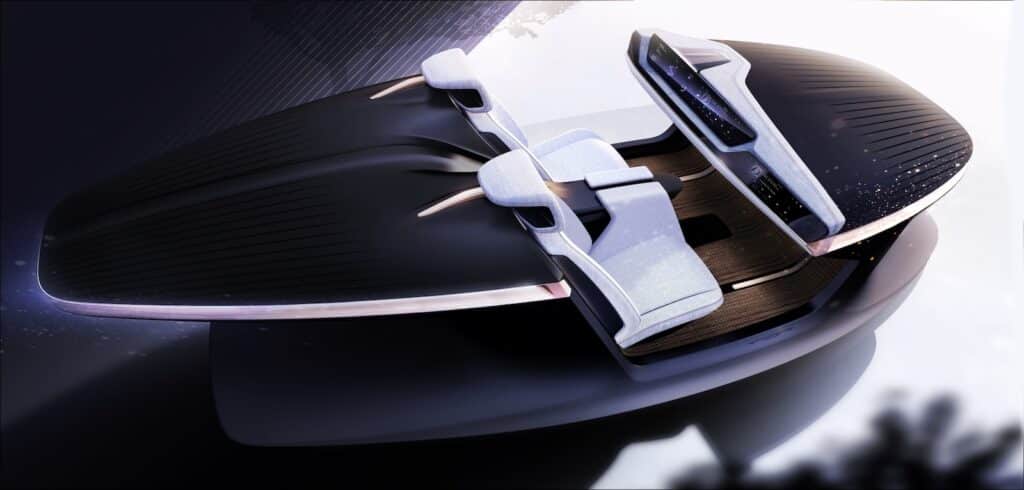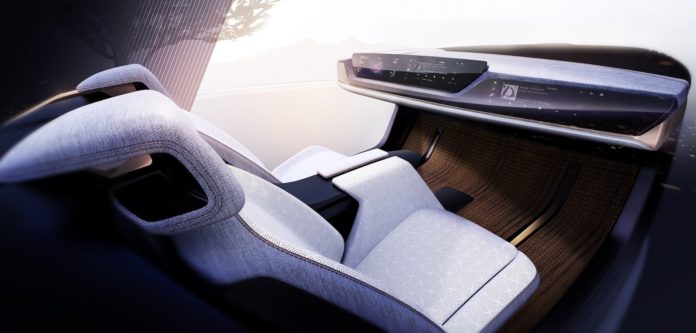A year after revealing its Airflow EV concept at the Consumer Electronics Show, Chrysler is back in Las Vegas, this time showing off its “Synthesis Cockpit Demonstrator,” and giving a strong hint as to what the cabin of its first all-electric model will look like when it launches in 2025.
Built into a two-seat concept vehicle, the Demonstrator shows off a variety of technologies that will be used by Chrysler — and many of the other brands owned by its parent Stellantis. These include an “AutoDrive” system, a “Smart Cockpit,” and the “Brain” to make it all work together.
“The Chrysler Synthesis shown at CES 2023 represents the future of Chrysler brand design, technology, and customer experience, by introducing customer-centric design and intuitive, seamlessly connected technology for real life,” said Chris Feuell, the Chrysler brand’s CEO.
Think of the Synthesis two-seater as something of a throw away. It’s really just the gift wrapping around the technology the Chrysler brand is showing off, something the long-struggling brand calls “Harmony in Motion.”
Reviving a legend
Once the flagship of the old Chrysler Corp., the eponymous brand was all but eviscerated under the management of the old Fiat Chrysler Automobiles. By the time FCA merged with France’s Peugeot, it had just two models in its line-up: the all-but-forgotten Chrysler 300 sedan and the Pacifica minivan.

It’s been put on life support by Stellantis CEO Carlos Tavares but now has to prove it can go through a radical makeover that will, for one thing, see Chrysler become an all-electric brand by 2028. The process begins with the launch of a production version of the Airflow model that generated significant buzz at CES 2022.
It will take more than a distinctive design and an all-electric drivetrain to stand out from the crowd, however, and that’s where the Synthesis Cockpit comes in.
The futuristic layout features a widescreen display combining a digital gauge cluster and an infotainment touchscreen. An additional display makes sure the front passenger doesn’t feel left out. That adds up to a total of 37.2 inches of digital displays.
That sort of triple-screen approach is far from unique. Sister brand Jeep already has a three-screen instrument panel available in its Grand Cherokee and Wagoneer lines. It’s the sci-fi layout, as well as the technology powering the system in the Synthesis Cockpit Demonstrator that really matter.
Moving forward
The STLA AutoDrive system is expected to go the next step beyond such semi-autonomous systems as General Motors’ Super Cruise and Ford’s BlueCruise. Technically a “Level 3” system, it will, according to Chrysler, allow for true hands-free driving on a wide range of roadways. While a driver will still be needed behind the wheel, ready to take over in an emergency, AutoDrive would allow the motorist to read, text, even watch videos under normal conditions.

The STLA Smart Cockpit brings the various features together by adding an Alexa-style voice assistant, as well as smartphone-style over-the-air update capabilities. OTA not only allows the automaker to fix balky software remotely but also enables Chrysler to update existing vehicle features, while also offering entirely new features and functions.
Enhanced connectivity will provide a pathway to download videos or games. It also will allow for a seamless connection between a vehicle and all of the owner’s other technologies. One might start watching a movie at home and then transfer it, mid-run, to the vehicle. The Synthesis system also would integrate an owner’s smartphone, allowing it to be used instead of a key, for example.
It’s all brought into sync using the STLA Brain technology, a next-generation electrical architecture. Significantly, this system moves away from today’s model, where dozens of microprocessors operate independently around the vehicle. Instead, vehicle sensors, displays and other electronic systems will be controlled by a central processing system. It’s an approach pioneered by Tesla and most automakers are moving in that direction.
A look into the future
Add it all up, and the Chrysler Synthesis Cockpit Demonstrator shows what tomorrow’s “Software-Defined Vehicle” will look and operate like.
The Demonstrator on display at CES will let visitors to the Chrysler booth try out the system to see how it can work during various parts of the day.
If it lives up to expectations, this approach should be smarter and more reliable, while introducing a variety of new features for consumers. But it also will have a big payoff for an automaker like Stellantis. CEO Tavares has estimated that by 2030 his company could generate more than $20 billion annually in in software and service revenues.
But, perhaps more importantly, the automaker is hoping that the technology in the Synthesis show vehicle will help revitalize a Chrysler brand struggling for a reason to exist.

